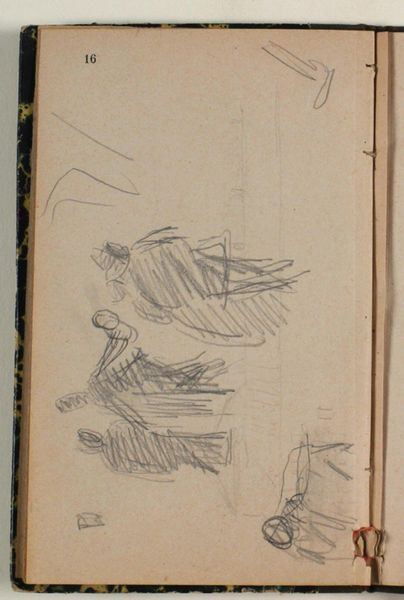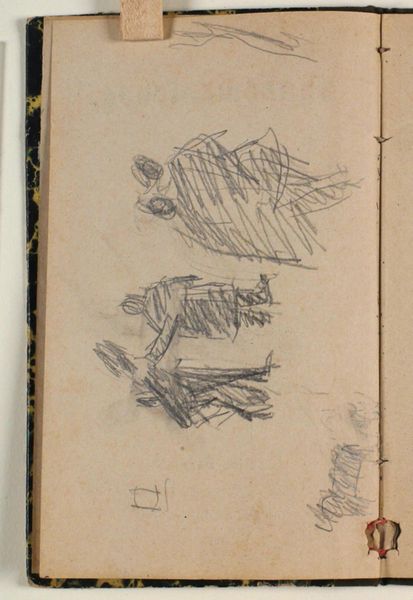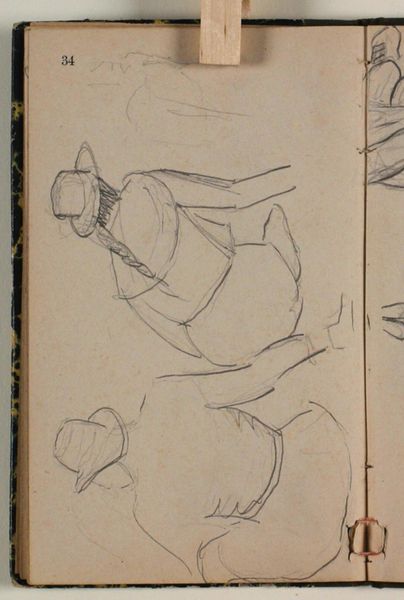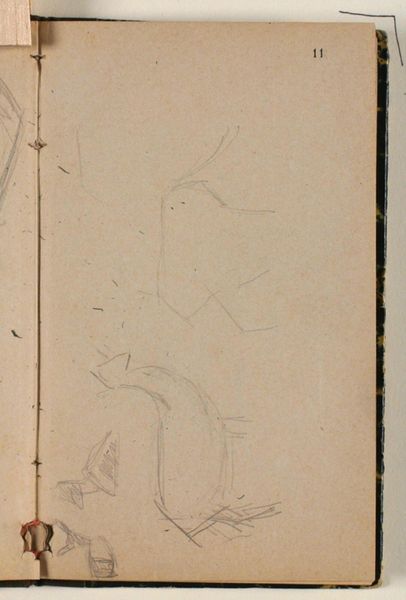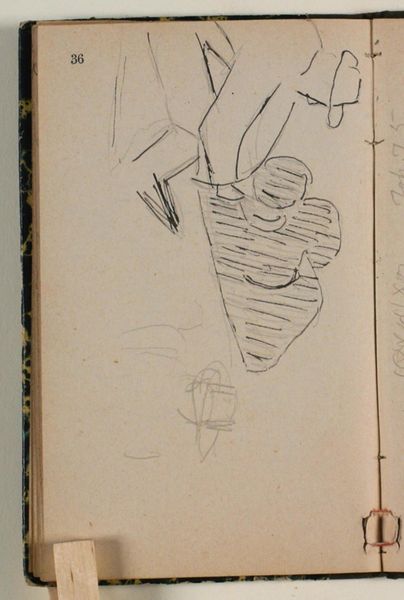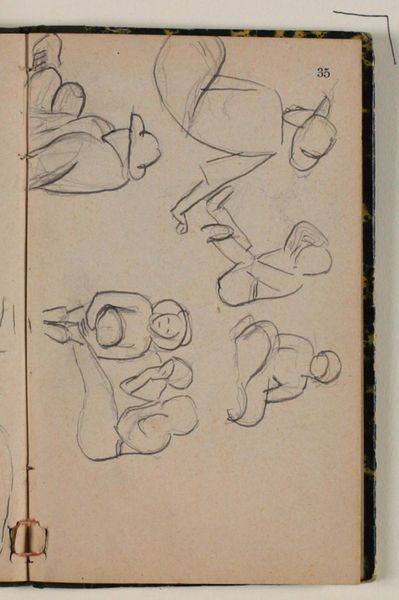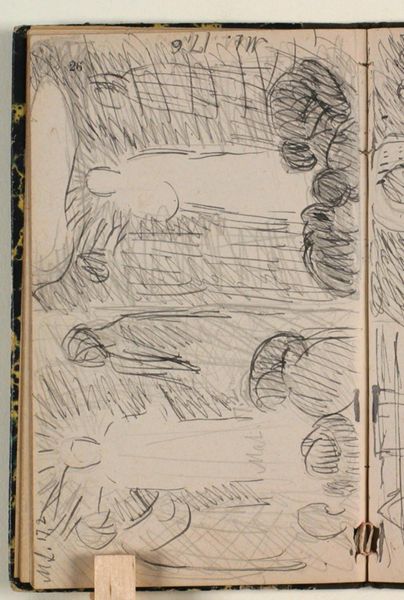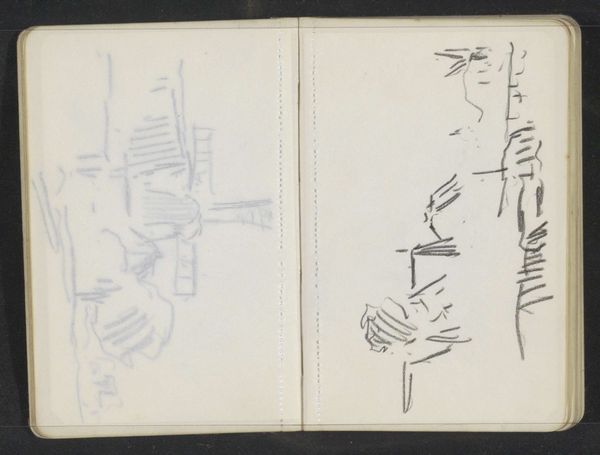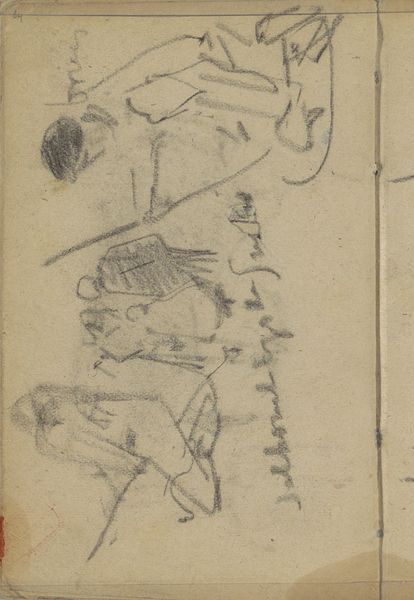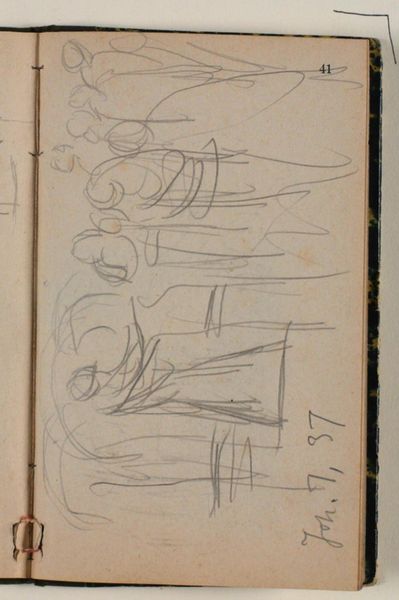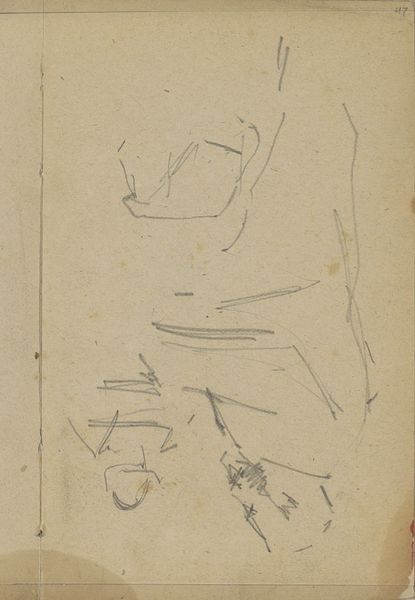
Skitser til figurkompositioner. Engen ved Nysø ? 1864 - 1941
0:00
0:00
drawing, paper, pencil
#
drawing
#
landscape
#
paper
#
pencil
Dimensions: 153 mm (height) x 93 mm (width) (monteringsmaal), 153 mm (height) x 93 mm (width) (bladmaal)
Editor: So, here we have “Skitser til figurkompositioner. Engen ved Nysø ?” which translates to “Sketches for figure compositions. The meadow at Nysø?”. It's a pencil on paper drawing by Niels Larsen Stevns, dating sometime between 1864 and 1941. I find the fragmented nature of the composition quite intriguing... almost like snippets of memories. What do you see in this piece? Curator: I see a potent glimpse into the artist's process, and how deeply intertwined nature, figure, and identity were for Stevns and his contemporaries. Look at how the figures seem to melt into the landscape. Could this suggest the limited roles available to many women in the Danish countryside at that time, constrained by nature and societal expectations? What kind of women might these be? Editor: Hmm, are you saying these sketches comment on women's limited agency in rural settings, making them an intrinsic part of the landscape itself? That’s not immediately obvious. I had been thinking more generally of the artist's mind at work. Curator: Precisely! The sketches invite us to reflect upon the artist’s engagement with representing women in Denmark’s natural world. Notice that many of the lines feel unresolved, like the ideas are still percolating. We could view this not just as the artist’s indecision, but perhaps his grappling with the social and historical complexities surrounding rural womanhood at this time. Does this initial reading suggest avenues for your own research, perhaps engaging with writings by or about Danish women of this period? Editor: That’s fascinating. It pushes the drawing beyond a simple landscape and makes it relevant to broader discussions about gender and society. Thanks for this new perspective! Curator: Indeed. This process of linking art to the political allows us to appreciate a single image more fully and discuss it as part of a greater historical movement.
Comments
No comments
Be the first to comment and join the conversation on the ultimate creative platform.
